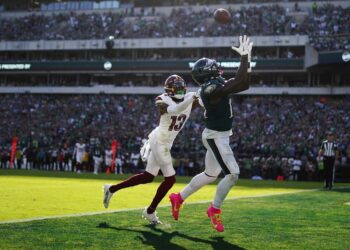Last week I wrote about how the NFL is not fun anymore right now because there are only five teams, three if we’re being honest with ourselves, who have a chance at winning the Super Bowl every year. For the other 27 29 teams their ceiling is a blowout loss in a Conference Championship game and, more realistically the Divisional Round. In that article, I failed to mention that the reason for the disparity between the handful of teams at the top of the league and everybody else lies within factors that they can control. The Chiefs, Ravens, Bills, 49ers, and Eagles have done an amazing job drafting and developing their players (quarterbacks 🙂 ), so much so that they’re light-years ahead of everyone else. The disparity makes for a palpable lack of parity, but there’s something comforting in knowing the chasm was created in a way that every other team can, theoretically, replicate.
That is NOT the case in baseball. The economic landscape of Major League Baseball is fundamentally broken, and it’s only getting worse. For years, we heard about how the “big market” teams had such an advantage over everybody else due to the economic power that comes with being a…big market. The Yankees, Dodgers, Red Sox, Cubs, Mets, and Phillies had a tangible advantage over the rest of the league and consistently reeled in the big fish free agents. In fact, for the better part of the last two decades, every time a superstar young player was called up, Yankees and Red Sox fans would say “he’ll look good in Boston/pinstripes in a few years,” and it was true more often than not.
Over the past few years, though, that’s changed immensely with two teams, the Dodgers and the Mets, elevating their spending to a level that’s impossible for the rest of the league to compete with. Sure, the Yankees still spend a lot of money, but they look like a mid-market team compared to the Dodgers and the Mets. Think about this. If I told my dad, who died in 2014, that the Yankees traded for a generational talent in his last year before free agency, who then led them to the World Series, lost said player in free agency TO THE METS, he’d probably die all over again.
So how did the Dodgers and Mets separate themselves economically from the rest of the league? Let’s Discuss.
The Mets did things the old-fashioned way. Their new(ish) owner, Steve Cohen, has unlimited money. His pockets aren’t just deep, they run deeper than the Kola Superdeep Borehole. They are bottomless. When Cohen, a cliche hedge fund manager with more money than God himself, wrestled the Mets majority owner title away from the Wilpons, his first order of business was to trade for and resign Francisco Lindor to a then-record 10-year, $334M deal before he played a game for the Metropolitans. The next offseason, he signed a 37-year-old Max Scherzer to a 3-year $130M deal, seemingly bidding against himself, and followed that up with a 2-year $86M deal for a 40-year-old Justin Verlander. But those deals were just appetizers. This offseason, he lured Juan Soto away from the Yankees with a 15-year $765M deal that shattered every contract record in professional sports. Simply put, Cohen is not concerned with turning a profit with the Mets. He just wants to win.
The Dodgers ownership group, led by Mark Walter (another finance bro), also has deep pockets, but they’ve taken two different paths to their economic power. Deferred money and Asia. Both Freddie Freem and Mookie Betts signed big deals with a ton of deferred money, lessening their impact on the current payroll. Freeman has $57M of his $162M contract (35%) deferred, while Mookie has $115M of his $365M contract (32%) deferred. Neither of those numbers are insignificant, but they pale in comparison to the deferred money in the contract Shohei Ohtani signed last year. A staggering $680M of his $700M contract (97%) is deferred!




